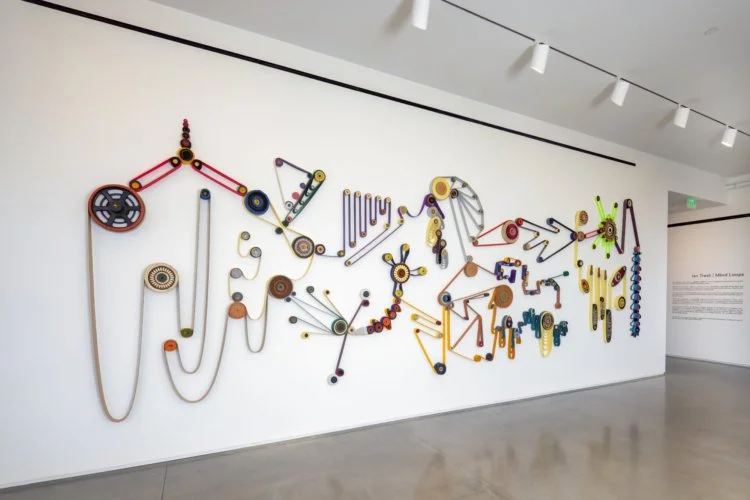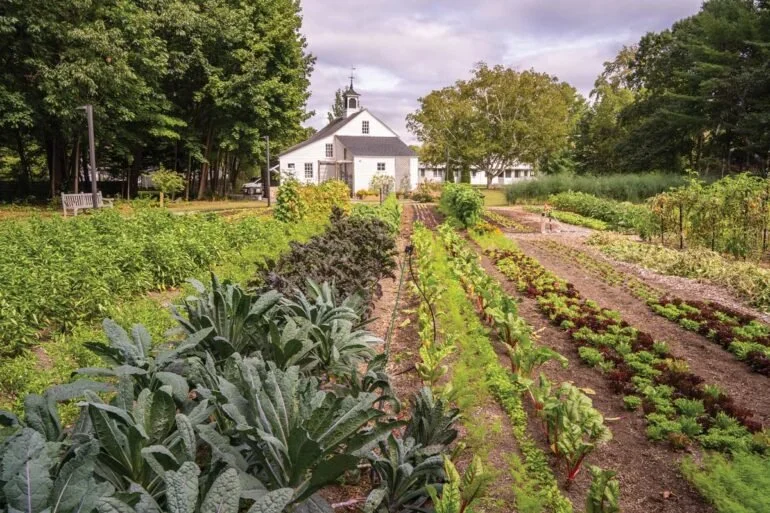The current grouping of shows at the Center for Maine Contemporary Art in Rockland is notable in so many ways, not least of which is that each one of the four exhibits is spectacular in its own right.
Some of their themes overlap, but for the most part, each evokes a particular contemplation and/or set of emotions. It is rare that a museum experience is so thoroughly and consistently satiating from one end to the other. All run through Jan. 8.
Ian Trask, ‘Mind Loops’
This exhibition features recent suspension wall installations by the Brunswick-based artist Ian Trask. The work is all recent and endlessly intriguing in terms of its materiality, mechanistic form and environmental message. Upon entering the museum, visitors are confronted with “Cosmic Thread,” a monumental wall work that initially looks like a perpetual motion machine, except that it is stationary.
Trask is well known for intercepting materials from the waste stream, a process and approach that makes us both question what trash is (one man’s is another’s treasure, as the saying goes), and examine the sheer magnitude of the garbage humanity generates in proportion to its presence on the planet.
The materials he uses in “Cosmic Thread” (and other smaller works) are textile belts and trims, felt, slide projector carousels and wooden wheel molds. It is slightly miraculous to realize, as we immerse ourselves in particular sections of the work, how banal materials so summarily discarded can be transformed into such beauty.
The way Trask mixes colors and textures, matte elements with glittery ones, and areas where belts hang slack with others where they are tightly wound, produces a kind of movement and rhythm that syncopates our vision across the wall. From a distance, we can also decipher what look like familiar forms (a nautilus shell, a finial like those atop Hindu stupas, flowers, pupae) mixed with more abstract lines, loops and decorative motifs.
Trask has worked every inch of this piece, most evident when one examines the carousels, each of which is treated differently. One appears stuffed with an Ace bandage, another with hazard tape, etc. The intricacy is mind-boggling.
Other works hew more closely to what we are used to with this artist. They consist of balls made of recycled materials that have been bundled and tied together, then suspended on monofilament to create patterns in front of walls that cast their shadows onto them. The most interesting one is “Infinite Pathways” for, again, its sense of movement. It feels almost like a labyrinth or trails left by tiny creatures in the sand or soil.
——
See full review here

